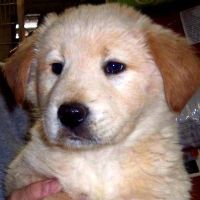What is K-Means Clustering?
Imagine you’re looking at a painting with thousands of colours. Beautiful, right? But what if you could simplify that painting into just 5–10 main colours, while still keeping its beauty intact? That’s exactly what K-Means clustering does. It groups similar pixels together, finds the dominant shades and recreates your image in a bold, artistic way. The result? A fresh, stylized version of your photo that feels like digital art.
Why Should You Try This?
- Create Unique Artwork: Turn a normal photo into something that looks hand painted or posterized.
- Get Design Inspiration: Quickly extract colour palettes you can use in branding, websites, or posters.
- Learn AI by Playing: Understand clustering concepts in a fun, visual way without coding.
- Save Storage: Simplify photos by reducing colours while keeping the essence intact.
- For Tech Lovers: Use it as a pre-processing step for image recognition and computer vision projects.
Before and After Example

.png)
How to Use This Tool?
- Upload your photo (JPG, PNG or WebP supported).
- Enter the number of clusters (for example, 3 gives a bold effect, 8 gives more detail).
- Click Convert and wait a few seconds.
- Download your new, stylized masterpiece instantly.
Pro Tip: Use 3–5 clusters for a cartoon or poster look and 7–10 for detailed yet simplified art.
A Peek Behind the Scenes
So, how does all this magic happen? Here’s the secret: The algorithm picks random “centroids” (think of them as colour leaders). Every pixel in your image then joins the group whose leader is most similar in color. Slowly, the leaders update themselves to represent their groups better. After a few rounds, the image settles down into K dominant colours. And boom — your photo is reborn as a piece of digital art.
The Math Behind K-Means
At its heart, K-Means tries to minimize the distance between each pixel and the center of its assigned cluster. This is written as a cost function:
J = ∑i=1K ∑x ∈ Ci ‖x - μi‖²
Where:
- K = number of clusters you choose
- x = a pixel (in RGB color space)
- μᵢ = the centroid (average colour) of cluster i
- Cᵢ = the set of pixels belonging to cluster i
In plain English: the algorithm keeps adjusting the “average colour” of each cluster until all pixels are as close as possible to one of the cluster centers. This process repeats until the clusters stabilize. That’s why your image ends up with K dominant colours.
Real Life Uses of K-Means
K-Means isn’t just for making fun art. It’s used in serious fields too:
- Medical Imaging: Doctors use clustering to highlight tissues in scans.
- Satellite Photos: Identify forests, water, or cities from space imagery.
- Marketing: Find customer groups by analyzing buying habits.
- Graphic Design: Extract palettes for posters, brands and UI designs.
- Photography: Give your shots a new mood with stylized clustering.
Frequently Asked Questions (FAQ)
Q: Is this tool free?
Yes! 100% free and browser-based.
Q: Will my images be stored?
No. Your images are processed instantly and discarded. We don’t keep a copy.
Q: Which formats can I upload?
JPG, PNG, and WebP are supported.
Q: How do I pick the right cluster number?
Try 3 for bold art, 5 for color palettes, 8–10 for detailed yet stylized looks.
Q: Does it work on mobile?
Yes, it runs smoothly on most modern browsers, whether desktop or mobile.
Explore More Fun Tools
Love this effect? Check out other effects: Edge Detection, MeanShift Styling, Image Blur & Denoiser, Fire Effect, Negative Converter, and KMeans for Video.
Final Words
K-Means is simple, fast and creative. Whether you’re an artist making posters, a student learning machine learning, or just someone who wants to have fun with photos — this tool is for you. Upload your image now and turn it into something truly unique.